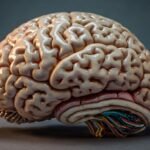
Personality disorders in children are a complex and sensitive topic.
While personality disorders are often associated with adults, they can also manifest in children and adolescents.
These disorders involve patterns of thinking, feeling, and behaving that deviate significantly from the cultural expectations, causing distress or impairing daily functioning.
Early recognition and intervention are crucial in managing these disorders effectively.
This article dives into common personality disorders found in children, their causes, signs, and the available support and treatments.
Common Personality Disorders in Children
Personality disorders in children are less commonly diagnosed than in adults, but some symptoms may appear early in life.
Here are the most common types seen in children:
Borderline Personality Disorder (BPD)
Children with BPD experience strong mood swings and have unstable relationships.
They may have a distorted self-image and a deep fear of being abandoned.
Impulsivity and difficulty managing emotions are common, leading to challenges in maintaining friendships.
Some may even engage in self-harm as a way to cope with their intense feelings.
Obsessive-Compulsive Personality Disorder (OCPD)
OCPD differs from OCD; it focuses more on a need for order and control rather than intrusive thoughts.
Children with OCPD can be perfectionistic and have a hard time being flexible.
They often feel stressed or anxious when things don’t go as planned, making it difficult for them to adapt to changes.
Antisocial Personality Disorder (ASPD)
ASPD can manifest in children through traits similar to conduct disorder.
Kids with these characteristics may show aggressive behavior and a lack of regard for others’ rights.
They might frequently lie, manipulate situations to their advantage, and struggle to empathize with those around them.
Histrionic Personality Disorder (HPD)
Children with HPD often crave attention and may behave dramatically to get it.
They have a strong need for approval and can be easily influenced by others.
These kids might struggle to form meaningful relationships because their emotional expressions are often exaggerated or overly theatrical.
Narcissistic Personality Disorder (NPD)
In children, NPD can look like a sense of entitlement and superiority.
These children may be very self-centered, always seeking admiration from others and often having difficulty understanding how others feel.
If their needs aren’t met, they might react with intense anger or frustration.
Avoidant Personality Disorder (AVPD)
Children with AVPD are extremely sensitive to criticism and often avoid social situations because they fear rejection.
They might struggle with low self-esteem, making it hard for them to build friendships due to their intense fear of being judged or embarrassed.
Dependent Personality Disorder (DPD)
DPD in children is characterized by an overwhelming reliance on others for emotional support and decision-making.
These kids often feel helpless without the guidance of others and have a strong fear of being left alone.
This dependence can hinder their ability to grow independently.

Causes and Risk Factors
Personality disorders in children are influenced by a combination of genetic, environmental, and psychological factors.
Understanding these can help in early intervention and prevention:
Genetic factors
If there’s a family history of personality disorders, depression, or other mental health issues, children may be more likely to develop similar problems.
Genetics can play a significant role in determining a child’s temperament and susceptibility to mental health challenges.
Environmental factors
A child’s environment significantly impacts their emotional and psychological development.
Experiences such as trauma, abuse, neglect, or living in a chaotic home can create an unstable foundation for emotional well-being.
Children exposed to such circumstances are at a higher risk of developing personality disorders later in life.
Biological factors
Some research suggests that differences in brain structure and chemistry might contribute to personality disorders.
For instance, imbalances in neurotransmitters (the chemicals that transmit signals in the brain) can affect how children process emotions and interact with others.
Parenting styles
The way parents raise their children can influence their personality development.
Overprotective parenting may hinder a child’s ability to become independent, while neglectful or overly critical parenting can lead to feelings of inadequacy and anxiety.
Each of these styles can create challenges in a child’s emotional growth and stability.
According to a study published in the Journal of Child Psychology and Psychiatry (2022), environmental factors such as early trauma and family dysfunction are among the most significant predictors of personality disorder symptoms in children.
Signs and Symptoms in Children
Identifying personality disorders in children can be challenging, as many behaviors may overlap with typical childhood behaviors or other developmental issues.
However, some signs may indicate a deeper issue:
- Extreme mood swings or emotional outbursts
- Difficulty forming and maintaining friendships
- Inconsistent self-image or identity confusion
- Intense fear of rejection or abandonment
- Aggressive, manipulative, or deceitful behavior
- Perfectionism or rigidity in routines and expectations
- Avoidance of social interactions due to fear of criticism
It’s important to note that while these signs can point to personality disorders, they do not confirm a diagnosis on their own.
Professional evaluation is necessary for a proper diagnosis.

Challenges of Diagnosis in Children
Diagnosing personality disorders in children can be particularly challenging for several reasons:
Diagnosing personality disorders in children can be quite complex due to various factors that make it different from diagnosing such conditions in adults.
Here are some of the key challenges:
Developmental changes
Children and teenagers experience rapid growth and change as they develop.
Behaviors that might appear concerning or indicative of a personality disorder may actually be normal parts of growing up.
For example, a child’s mood swings or changes in friendships can be temporary phases rather than signs of a deeper issue.
Overlap with other disorders
Many symptoms of personality disorders can look similar to those of other mental health conditions, like Attention-Deficit/Hyperactivity Disorder (ADHD), depression, or anxiety.
This overlap can make it tough for professionals to accurately diagnose the problem.
For instance, a child who seems withdrawn might be dealing with anxiety rather than a personality disorder.
Stigma and misdiagnosis
There is often a stigma attached to mental health issues in children, which can lead parents and caregivers to hesitate when seeking help.
Additionally, the fear of labeling a child too soon can result in misdiagnoses or delays in receiving appropriate treatment.
Children may end up being labeled incorrectly, which can affect their self-esteem and future interactions.
A study from the American Journal of Psychiatry (2021) highlights the importance of cautious diagnosis, emphasizing that early identification should focus on symptoms and behaviors rather than labeling children too quickly.
Impact on Children’s Lives
Personality disorders can significantly affect a child’s daily life and overall well-being.
Here’s how these disorders can impact different areas of their lives:
School performance
Children with personality disorders may find it hard to focus and stay engaged in school.
They might experience emotional outbursts, which can disrupt their learning and lead to conflicts with classmates or teachers.
As a result, their academic performance can suffer, making it difficult for them to keep up with their peers.
Social relationships
Building and maintaining friendships can be challenging for these children.
They may struggle to connect with others, leading to feelings of isolation and loneliness.
Their intense emotions or unpredictable behavior can make it hard for peers to understand or relate to them, further complicating social interactions.
Family dynamics
Personality disorders can also create tension within the family.
Parents might feel overwhelmed trying to meet their child’s emotional and behavioral needs.
This strain can lead to misunderstandings and conflict within the family, making it harder for everyone to communicate effectively and support one another.
Long-term effects
If these challenges are not addressed early, they can carry over into adulthood, potentially leading to more severe mental health issues.
The skills and coping mechanisms that children develop (or don’t develop) during their formative years can shape their future relationships, job performance, and overall quality of life.

Treatment and Support
Treating personality disorders in children can be complex, but there are various therapies and support systems that can make a significant difference in their lives.
Here’s a look at some effective approaches:
Cognitive Behavioral Therapy (CBT)
CBT is a widely used therapy that helps children recognize and change negative thoughts and behaviors.
By teaching them how to identify patterns that lead to distress, CBT equips children with coping skills to manage their symptoms better.
This approach can help them develop a more positive outlook and improve their interactions with others.
Dialectical Behavior Therapy (DBT)
DBT is particularly beneficial for children with Borderline Personality Disorder (BPD).
This therapy focuses on teaching children skills to manage their emotions, build healthier relationships, and reduce harmful behaviors.
DBT emphasizes mindfulness, which helps children stay present and cope with intense feelings without reacting impulsively.
Family therapy
Involving the family in the treatment process can be incredibly supportive for the child.
Family therapy aims to improve communication and strengthen relationships within the family unit.
It helps everyone understand the challenges the child faces, fostering a more supportive environment that encourages healing and growth.
Medication
While there’s no specific medication for personality disorders, doctors may prescribe antidepressants or mood stabilizers to help manage symptoms like anxiety or depression that often accompany these disorders.
Medication can provide relief and make other forms of therapy more effective.
Multidisciplinary approach
For the best outcomes, a collaborative approach involving psychologists, psychiatrists, and family support systems is often recommended.
Each professional can contribute unique insights and skills, ensuring the child receives well-rounded support tailored to their needs.

Final Thoughts
Personality disorders in children are complex and multifaceted, but early recognition and intervention can make a significant difference in a child’s life.
Understanding the causes, signs, and treatment options can empower parents, caregivers, and educators to provide the necessary support.
If you suspect your child may be struggling with a personality disorder, seeking professional help is the first step towards effective management and support.


